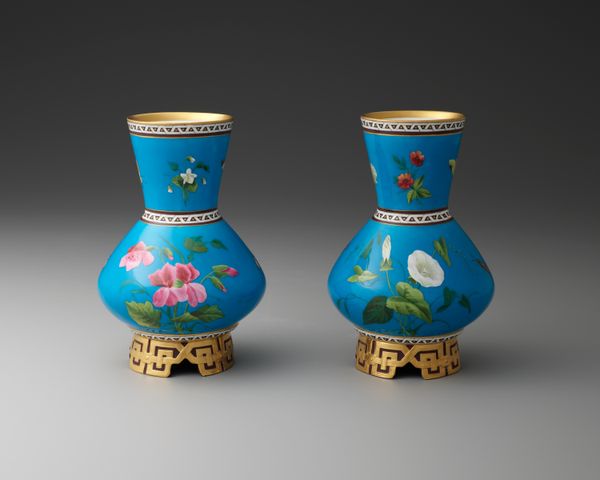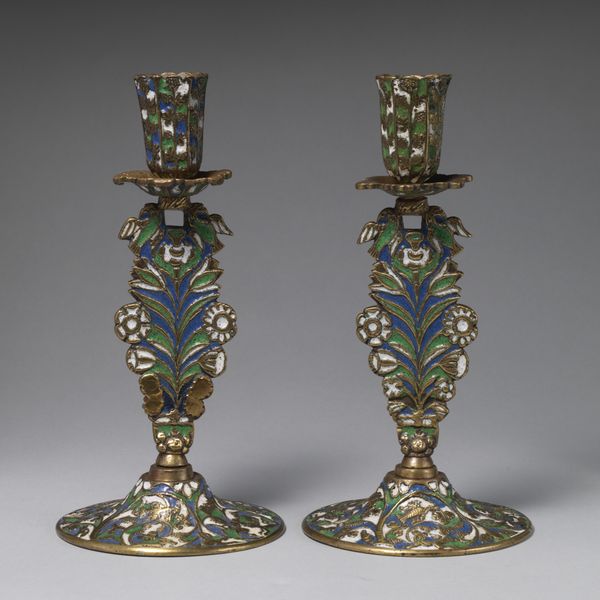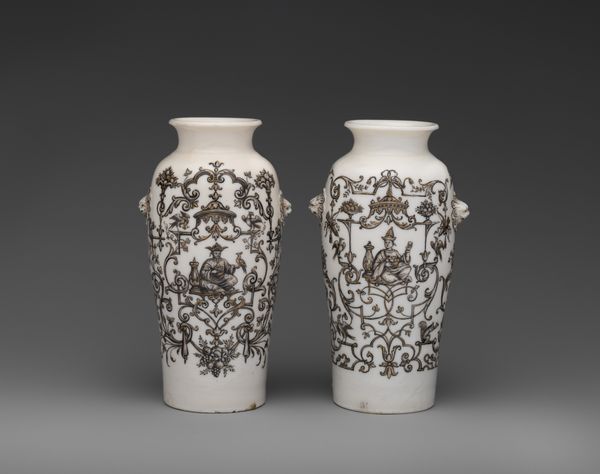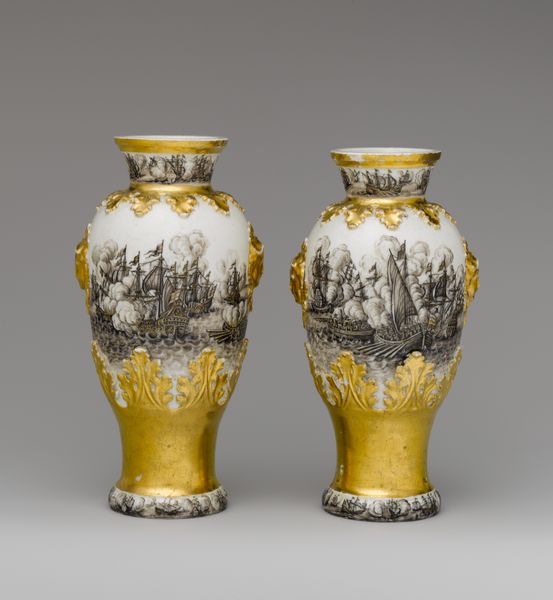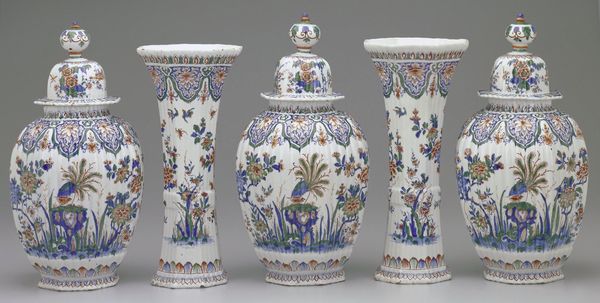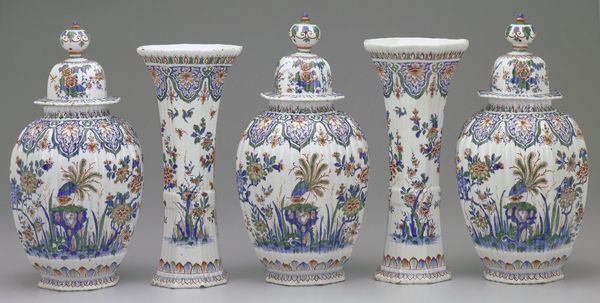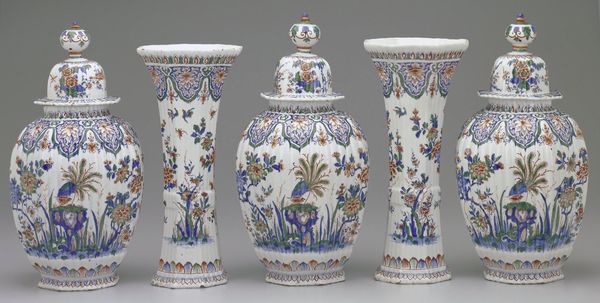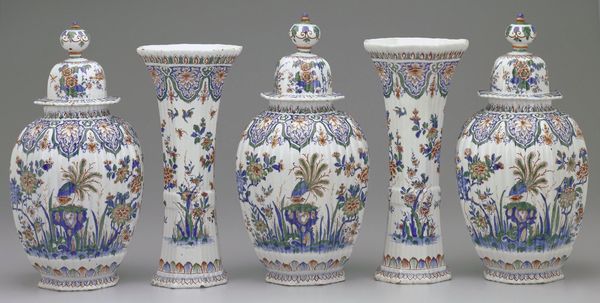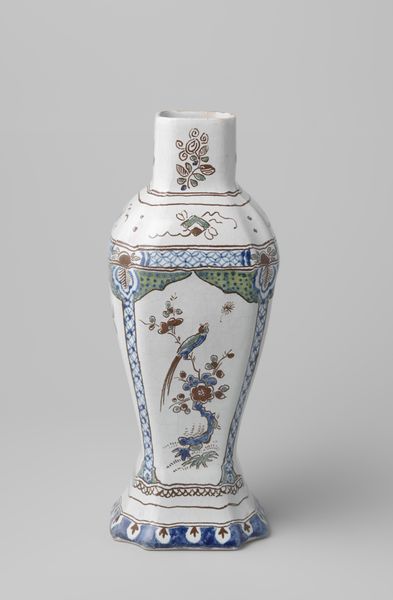
Dimensions: confirmed: 12 1/8 × 5 5/8 × 3 7/8 in. (30.8 × 14.3 × 9.8 cm)
Copyright: Public Domain
Editor: So, we have here a pair of porcelain vases by Christopher Dresser, likely made between 1867 and 1885. The turquoise really grabs me, and the overall form, particularly how they sit on those bases. How do you see the making of these affecting their value or place within art history? Curator: From a materialist perspective, the creation of these vases tells a complex story of artistic and industrial labor. Dresser, though a celebrated designer, outsourced production, making them in a factory using possibly non-European laborers. We must ask ourselves who actually crafted these pieces, what their working conditions were like, and what was the value ascribed to their labor versus Dresser's designs? The 'orientalism' isn't just aesthetic, it speaks to flows of materials and labor within global capitalism. Editor: That's a darker view than I initially considered. The bird motifs and vibrant colors made me think of beauty and nature. I hadn’t thought about who did the actual, often repetitive work, and under what conditions, for example the conditions under which those decorative elements were created and the social implications for the artists producing them. Curator: Precisely. By focusing on materials – the porcelain, the glazes, the gold trim – and their sources, we uncover layers of extraction, manufacturing, and trade. Were the materials sourced ethically? The creation of decorative art in the Arts & Crafts Movement can offer critical insights into the complex intersections of artistic intention, modes of production, social inequity, and cultural consumption during the height of the British Empire. Editor: I see what you mean. Knowing this shifts my understanding away from a simple appreciation of beauty and towards a critical analysis of production. Curator: Exactly, we look beyond the finished product to analyze the means and social relations of its production. Editor: I’ll definitely look closer at how art objects reflect their social context from now on. Thanks.
Comments
No comments
Be the first to comment and join the conversation on the ultimate creative platform.
